-
Product Name
TLR2 Polyclonal Antibody
- Documents
-
Description
Polyclonal antibody to TLR2
-
Tested applications
WB, IHC, IF
-
Species reactivity
Human, Mouse, Rat
-
Alternative names
TLR2 antibody; CD282 antibody; TIL4 antibody; toll-like receptor 2 antibody
-
Isotype
Rabbit IgG
-
Preparation
Antigen: A synthetic peptide of human TLR2
-
Clonality
Polyclonal
-
Formulation
PBS with 0.02% sodium azide, 50% glycerol, pH7.3.
-
Storage instructions
Store at -20℃. Avoid freeze / thaw cycles.
-
Applications
WB 1:200 - 1:500
IHC 1:50 - 1:200
IF 1:50 - 1:100 -
Validations
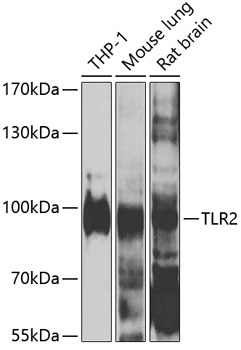
Western blot - TLR2 Polyclonal Antibody
Western blot analysis of extracts of various cell lines, using TLR2 antibody at 1:1000 dilution.Secondary antibody: HRP Goat Anti-Rabbit IgG (H+L) at 1:10000 dilution.Lysates/proteins: 25ug per lane.Blocking buffer: 3% nonfat dry milk in TBST.Detection: ECL Enhanced Kit .Exposure time: 20s.
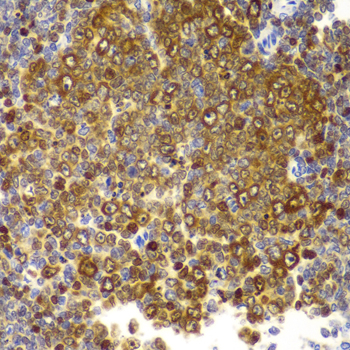
Immunohistochemistry - TLR2 Polyclonal Antibody
Immunohistochemistry of paraffin-embedded rat spleen using TLR2 antibody at dilution of 1:100 (40x lens).
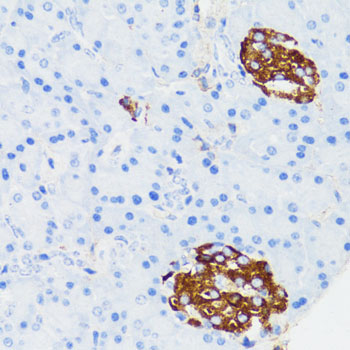
Immunohistochemistry - TLR2 Polyclonal Antibody
Immunohistochemistry of paraffin-embedded mouse islets of langerhans using TLR2 antibody at dilution of 1:150 (40x lens).
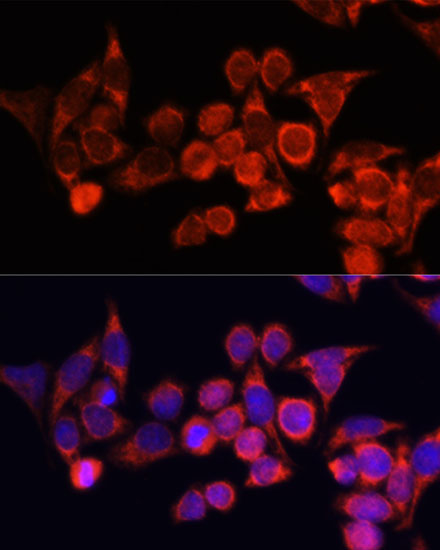
Immunofluorescence - TLR2 Polyclonal Antibody
Immunofluorescence analysis of HeLa cells using TLR2 antibody at dilution of 1:100. Blue: DAPI for nuclear staining.
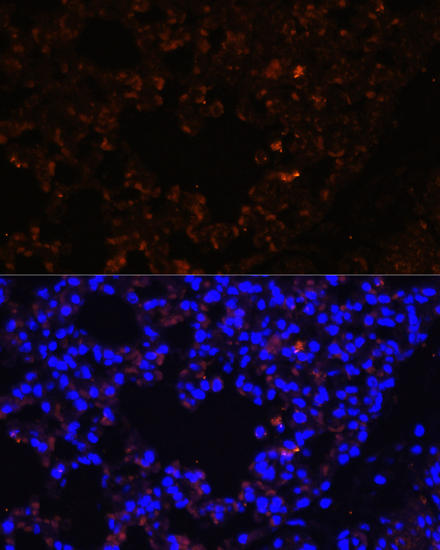
Immunofluorescence - TLR2 Polyclonal Antibody
Immunofluorescence analysis of mouse lung using TLR2 antibody at dilution of 1:100. Blue: DAPI for nuclear staining.
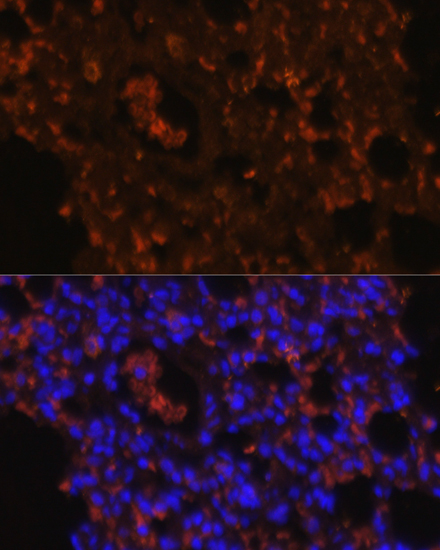
Immunofluorescence - TLR2 Polyclonal Antibody
Immunofluorescence analysis of rat lung using TLR2 antibody at dilution of 1:100. Blue: DAPI for nuclear staining.
-
Background
Cooperates with LY96 to mediate the innate immune response to bacterial lipoproteins and other microbial cell wall components. Cooperates with TLR1 or TLR6 to mediate the innate immune response to bacterial lipoproteins or lipopeptides. Acts via MYD88 and TRAF6, leading to NF-kappa-B activation, cytokine secretion and the inflammatory response. May also activate immune cells and promote apoptosis in response to the lipid moiety of lipoproteins. Recognizes mycoplasmal macrophage-activating lipopeptide-2kD (MALP-2), soluble tuberculosis factor (STF), phenol-soluble modulin (PSM) and B.burgdorferi outer surface protein A lipoprotein (OspA-L) cooperatively with TLR6. Stimulation of monocytes in vitro with M.tuberculosis PstS1 induces p38 MAPK and ERK1/2 activation primarily via this receptor, but also partially via TLR4. MAPK activation in response to bacterial peptidoglycan also occurs via this receptor. Acts as a receptor for M.tuberculosis lipoproteins LprA, LprG, LpqH and PstS1, some lipoproteins are dependent on other coreceptors (TLR1, CD14 and/or CD36); the lipoproteins act as agonists to modulate antigen presenting cell functions in response to the pathogen. M.tuberculosis HSP70 (dnaK) but not HSP65 (groEL-2) acts via this protein to stimulate NF-kappa-B expression. Recognizes M.tuberculosis major T-antigen EsxA (ESAT-6) which inhibits downstream MYD88-dependent signaling (shown in mouse) (By similarity). Forms activation clusters composed of several receptors depending on the ligand, these clusters trigger signaling from the cell surface and subsequently are targeted to the Golgi in a lipid-raft dependent pathway. Forms the cluster TLR2:TLR6:CD14:CD36 in response to diacylated lipopeptides and TLR2:TLR1:CD14 in response to triacylated lipopeptides. Required for normal uptake of M.tuberculosis, a process that is inhibited by M.tuberculosis LppM (By similarity).
Related Products / Services
Please note: All products are "FOR RESEARCH USE ONLY AND ARE NOT INTENDED FOR DIAGNOSTIC OR THERAPEUTIC USE"
